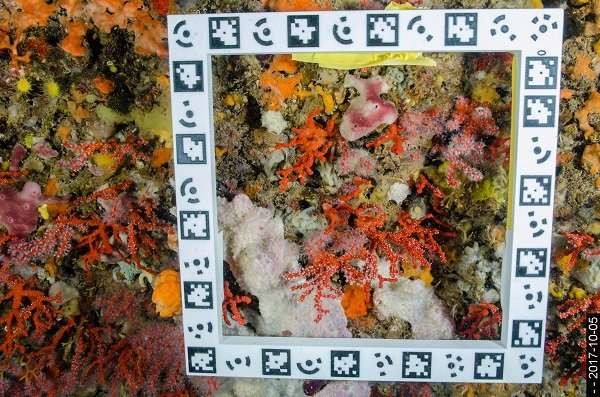The deeper the water, the most long-lived species. Credit: Cristina Linares (UB-IRBio)
Deep marine ecosystems from 100 to 1,000 meters deep are dominated by long-lived species that live from 100 to 1000 years, while other waters are inhabited by those species that live up to about 10 years.
This is the main conclusion of a new study on marine ecology and biology by an international collaboration.
The study, published in the journal Proceedings of the Royal Society of London B, describes for the first time the impact of the environmental factors including light, nutrients, temperature, physical disturbances, and other inputs on the longevity patterns of sessile species that live in seabeds (corals, gorgonians, sponges, macroalgae, clams, etc.).
The deeper the water, the most long-lived species
Marine ecosystems are the most abundant in the planet, but less well explored than land ecosystems. Due the difficulties of the marine environment for scientific research, the most studied biological communities by researchers are mostly those at 30 to 40 meters deep maximum (tropical reefs, algae infralittoral communities, etc.).
Despite the biological variety of ocean ecosystems, the new study notes that the deeper they are, the more longevity species have. It was known that environmental factors of deep environments, which are stable and protected from environmental disturbances, favour long life, but so far, "there was not a single scientific study proving this pattern between depth and longevity quantitatively and systematically," says Cristina Linares, lecturer from the Department of Evolutionary Biology, Ecology and Environmental Sciences of the University of Barcelona.
The extreme life of red coral in the Mediterranean
The article is centred on several scientific studies on the distribution and longevity of sessile marine species and on a long-term study on red coral as an emblematic and long-lived species of the Mediterranean.
The new study states that the red coral (Corallium rubrum) can live up to 500 years, and it is one of the most long-lived anthozoans described so far. This result was achieved via the analysis of demographic data series combined with new modelling techniques on population dynamics. In the Mediterranean, the Lophelia pertusa and Madrepora oculata corals, big creators of marine clams in cold waters, show another high longevity profile, similar to some marine phanerogamous species such as Posidonia oceanica.
UB expert Ignasi Montero Serra, predoctoral researcher and first author of the article, says, "The deepest habitats, more stable than shallower waters, have more long-lived species. These have stable population dynamics, slow growth rate, a high survival of adult individuals and a lower breeding rate, factors that limit their recovery regarding the effects of environmental disturbances."
In shallow waters, diversity of life strategy is larger and there is a coexistence of long-lived species with short-lived ones. The populations at these depths are more dynamic and variant, with a lower survival in adults but a higher sexual reproduction rate. Therefore, these species have faster recovery patterns regarding the impact of disturbances (storms, etc.).
The most vulnerable communities live in the great depths
Regarding biodiversity preservation, the authors warn about the effects of human activity on the most vulnerable inhabitants of the seabeds. "Long-lived species in the deepest habitats are usually sensitive to the impact that increase mortality of adult individuals," says Joaquim Garrabou, scientific researcher at ICM-CSIC.
As a result, the species that live in the deepest seabeds show a low resilience to destructive environmental impacts created by human activity, such as trawling. In case of a natural habitat disturbance, it could take dozens or hundreds of years for some species to recover, if they can even do so.
Therefore, depth could be a predicting factor for the longevity patterns of benthic organisms in marine ecosystems, which could help in assessing the potential vulnerability of deep, unexplored ecosystems regarding potential impacts coming from human activity.
Protecting the ecological state of marine ecosystems
Despite the progress of new studies, there is a lack of knowledge on environmental factors that determine the distribution and composition of communities in marine depths. Therefore, it is necessary to join efforts to study deep ecosystems, "prioritize environmental management to protect the known communities, and apply the precautionary principle in areas on which we do not have enough ecological knowledge," the scientific team writes.
More information: I. Montero-Serra et al. Strong linkages between depth, longevity and demographic stability across marine sessile species, Proceedings of the Royal Society B: Biological Sciences (2018). DOI: 10.1098/rspb.2017.2688
Journal information: Proceedings of the Royal Society B
Provided by University of Barcelona
























